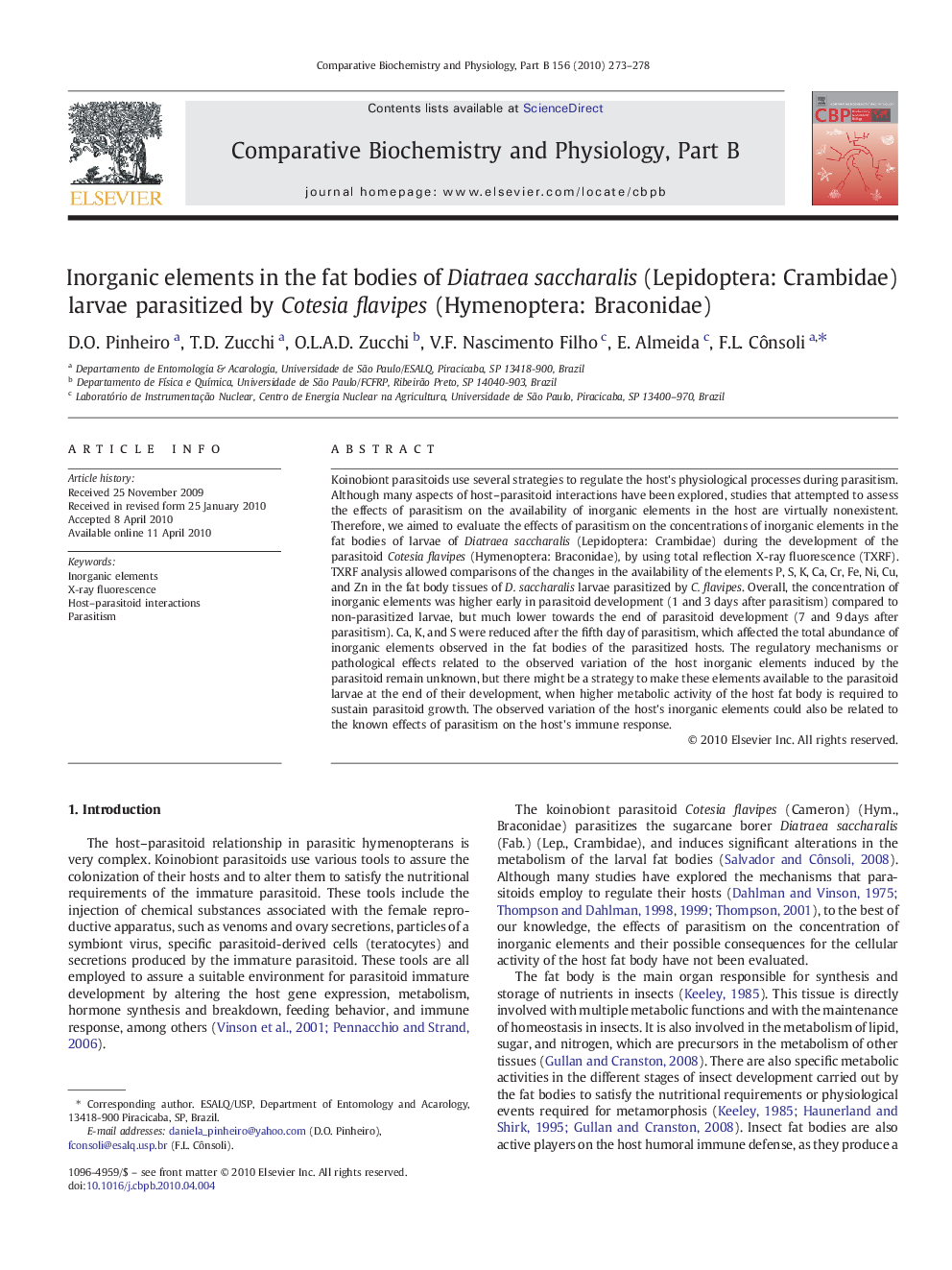| کد مقاله | کد نشریه | سال انتشار | مقاله انگلیسی | نسخه تمام متن |
|---|---|---|---|---|
| 1975640 | 1060642 | 2010 | 6 صفحه PDF | دانلود رایگان |

Koinobiont parasitoids use several strategies to regulate the host's physiological processes during parasitism. Although many aspects of host–parasitoid interactions have been explored, studies that attempted to assess the effects of parasitism on the availability of inorganic elements in the host are virtually nonexistent. Therefore, we aimed to evaluate the effects of parasitism on the concentrations of inorganic elements in the fat bodies of larvae of Diatraea saccharalis (Lepidoptera: Crambidae) during the development of the parasitoid Cotesia flavipes (Hymenoptera: Braconidae), by using total reflection X-ray fluorescence (TXRF). TXRF analysis allowed comparisons of the changes in the availability of the elements P, S, K, Ca, Cr, Fe, Ni, Cu, and Zn in the fat body tissues of D. saccharalis larvae parasitized by C. flavipes. Overall, the concentration of inorganic elements was higher early in parasitoid development (1 and 3 days after parasitism) compared to non-parasitized larvae, but much lower towards the end of parasitoid development (7 and 9 days after parasitism). Ca, K, and S were reduced after the fifth day of parasitism, which affected the total abundance of inorganic elements observed in the fat bodies of the parasitized hosts. The regulatory mechanisms or pathological effects related to the observed variation of the host inorganic elements induced by the parasitoid remain unknown, but there might be a strategy to make these elements available to the parasitoid larvae at the end of their development, when higher metabolic activity of the host fat body is required to sustain parasitoid growth. The observed variation of the host's inorganic elements could also be related to the known effects of parasitism on the host's immune response.
Journal: Comparative Biochemistry and Physiology Part B: Biochemistry and Molecular Biology - Volume 156, Issue 4, August 2010, Pages 273–278